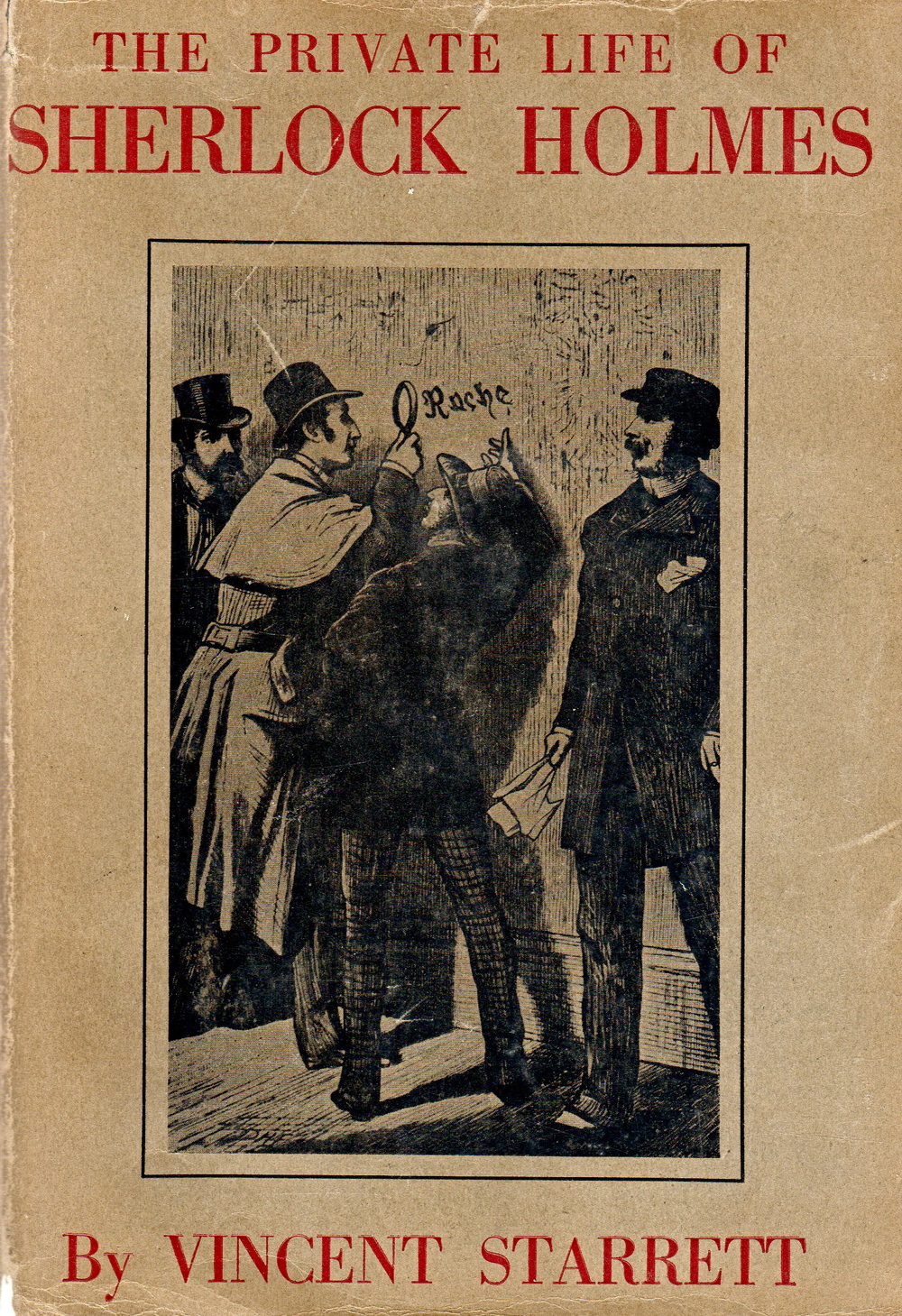
First, a warning: if you aren't a Sherlock Holmes enthusiast*, you might wish to give this a miss. The book is predicated on a basic familiarity/fascination with the canon, the characters, and the author. If you are a fan of the great detective, however, I predict you'll thoroughly enjoy this opportunity to engage in a leisurely discourse with one of the most noted of Sherlockian scholars and admirers. (I say discourse, because this is the kind of book you talk back to - read it with pencil in hand so you can underline, star, and annotate at will!)
(*While Holmes enthusiasts are often eccentric, it is inaccurate to characterize them as "crackpots". Famous members of the most esteemed Sherlock Club - the Baker Street Irregulars - include Franklin Roosevelt, Harry Truman, Isaac Asimov, and an array of scientists, scholars, and businessmen. No shame in numbering oneself among such company!)
Vincent Starett is one of the original "Sherlockians" and this book one of the first to establish the boundaries of "Sherlockian studies". Originally published in the 1940s, this collection of essays includes discussions on the origins of the character, his methods, his (in)famous plummet from Reichenbach Falls & triumphant return, 221B Baker Street (its location and contents), and an especially interesting exploration of Sherlock in books/art/stage. The essays whimsically wander between acknowledging the stories as fiction and treating them as actual historical documents, recording the adventures of an authentic historical personage. Thus we are treated to factual explorations of Conan Doyle's career, Victorian London, and publication details, interspersed with passionate debates about inconsistencies in the stories, lists of monographs purportedly published by Holmes, a discussion of Holmes' biography, an exploration of the nature of the friendship between he and Watson, and speculative lists of "unpublished cases". Starett, a noted journalist, author, and bibliophile back in the day, manages to maintain a reverent, erudite tone without lapsing into campiness. And his knowledge of the canon is wonderfully thorough: every page contained some new insight or item of information that enriched my appreciation of the canon, the gentleman who created them, and - yes - even the people who continue to revere Sherlock and his gaslamp-lit world, "where it is always 1895".
And because this is a 75th anniversary edition, we also get an extensive forward by Ray Betzner exploring the life and adventures of Starrett - a fascinating fellow in his own right - as well as an overview of the evolution of Sherlockian studies.
The book is some 200 pages but a quick, engaging read (depending, that is, on how much time you spend annotating), with a great bibliography of Sherlock-related texts at the end; and don't miss out on an opportunity to assess your own Sherlock cred by tackling the "Final Examination Paper" at the end ... sure to humble even the most avid and well-read Sherlock fans!
No comments:
Post a Comment